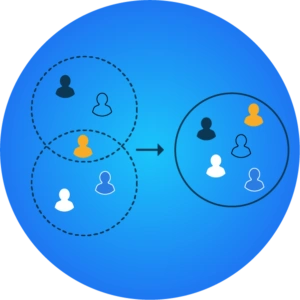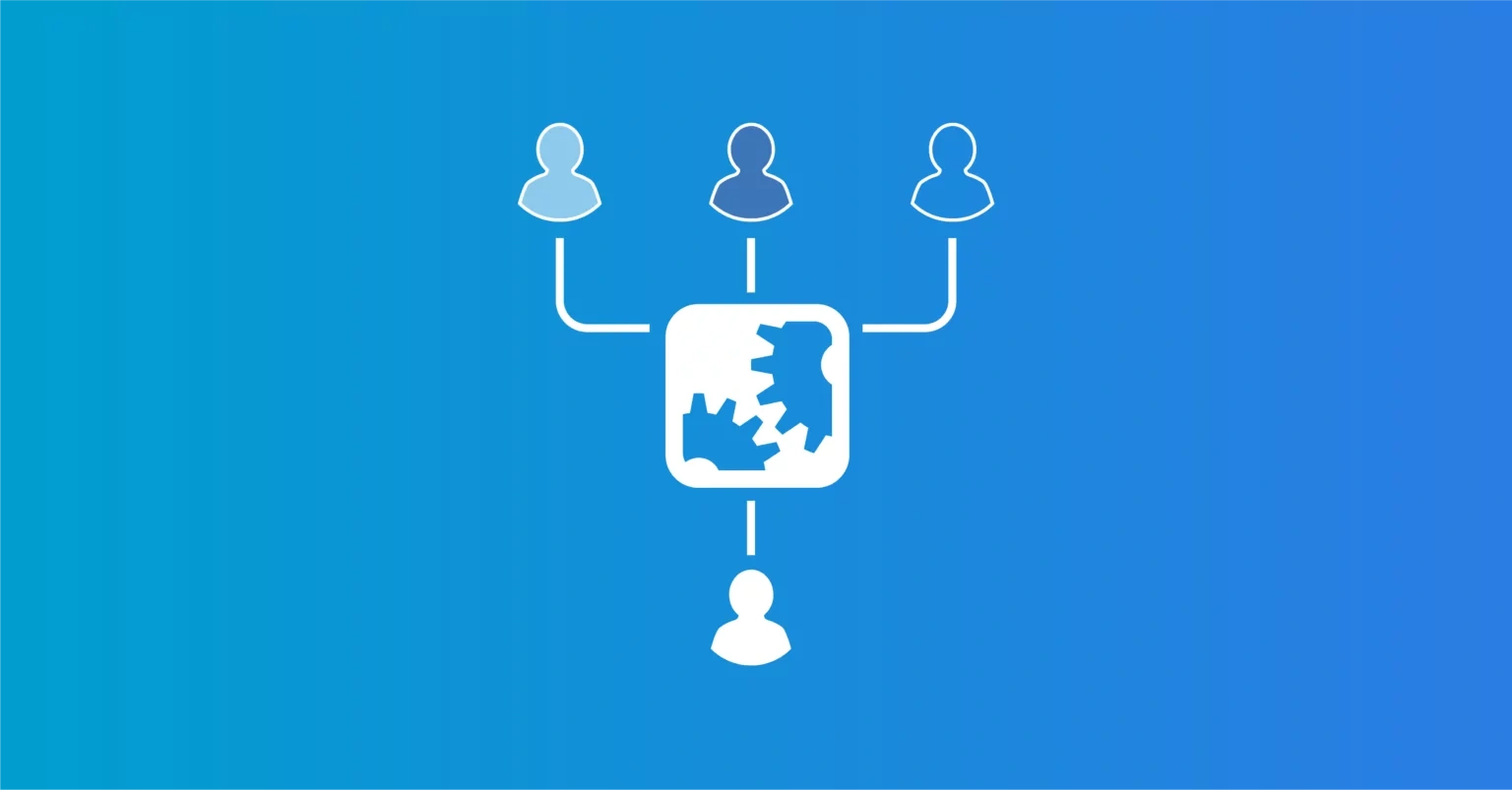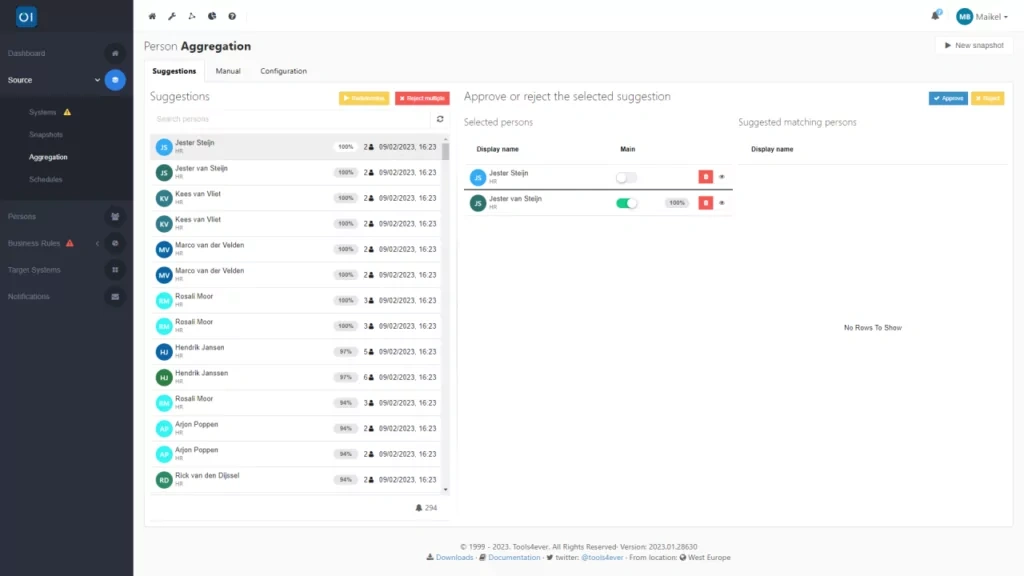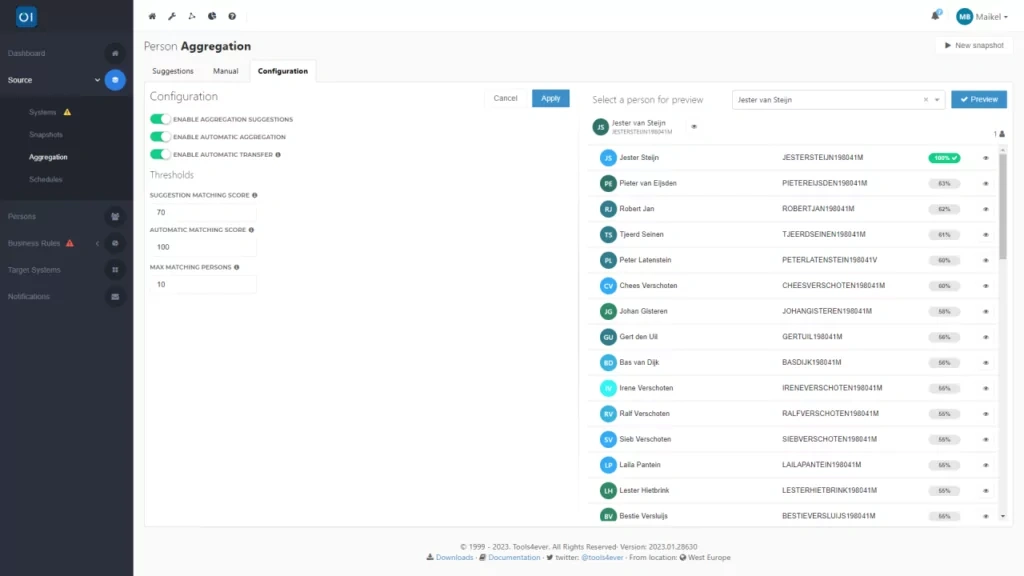Eliminating Duplicate Data from Your Source System
Individuals may appear multiple times in a source system for a range of reasons. They can also exist in multiple source systems simultaneously. HelloID offers a solution for removing these duplicate entries, thus avoiding the creation of redundant or duplicate accounts. In this blog, we delve into the world of personal data aggregation. You'll learn about the benefits of this feature, how it functions in detail, and ways to automate the data aggregation process.
What is personal data aggregation?
Duplicate data frequently occurs in source systems like HR systems for a variety of reasons. For instance, if an employee is also serving as a volunteer, labor laws may necessitate having two separate records for that individual in the HR system. Consequently, a person may appear more than once in your HR system and may even be assigned different employee identification numbers. Additionally, some organizations utilize multiple source databases. Consider an educational institution where a staff member's details are stored both in the HR database and the student information system, or a healthcare facility that links its HR system with a separate scheduling software package.

Using HelloID's aggregation feature, you can integrate multiple secondary listing (non-main persons) of individuals with a primary listing (main person). Personal aggregation is a process in which you merge all user records related to listings of a person in the source system into one primary individual within HelloID. This way, you eliminate duplicate data and ensure that you integrate all available information with each other.
When do you want to merge data?
The need to merge or aggregate data becomes important when an individual is listed multiple times across one or more source systems, and your goal is to maintain just a single HelloID account for each person. This situation frequently arises, for example, when an intern becomes a full-time employee. While their employee ID might change, their user account and associated data should stay the same. This is also true in other scenarios, such as when an individual is also a volunteer.
By utilizing HelloID's data aggregation feature, you can seamlessly merge employee records from different accounts, all without altering the original data or its storage configuration in the source system. This is essential as it allows your HR department to continue operating without modifying their existing processes.
How does personal data aggregation work in practice?
During the data aggregation process, HelloID identifies duplicate records of individuals by comparing specific attributes such as birth date, initials and name. These attributes are usually both accurate and unique to individual records. Although it might seem logical to use an existing unique identifier, such as a Social Security number (or the local equivalent) for this purpose, it's not always legal to do so. An example is the social security number in the Netherlands, called. By law, it is not allowed to be used, unless the organization is governmental. For non-governmental organizations, using such identifiers are only permissible if explicitly authorized by law.
If HelloID identifies multiple entries in a source system linked to a single individual, the IAM solution first determines which is the primary entry. This could be based on the number of hours per week that an individual devotes to a specific role. All relevant employee records that HelloID finds in your source system are then integrated with this primary entry.
Reversing the merging of data
HelloID aggregates data on its own platform without modifying the original data in the source system. This feature is crucial as it provides the flexibility to reverse any merged data when necessary. It gives you the confidence to know that you can always go back to your initial dataset, irrespective of any changes you have made or automated via HelloID.
Manual or automated personal aggregation
In practice, the aggregation feature works through suggestions. You can handle these suggestions either manually or automatically. If you choose the manual route, you remain in full control of the process. Opting for automation saves time and simplifies user account management.

When the process is automated, no manual actions are needed to approve and implement suggestions. It's important to note that HelloID will only automatically implement a suggestion if it matches just one individual. If there are multiple matches, HelloID will still present the suggestions for your review.
Another key element that influences whether HelloID automatically executes suggestions is the Automatic Matching Score. HelloID assesses each individual for whom a suggestion is made and allocates a score based on this assessment. If this score surpasses a predetermined threshold, the suggestion is automatically implemented. You get to set this minimum score during the configuration of the aggregation feature. The Automatic Matching Score is instrumental in ensuring accurate account linking, even in cases of typographical errors.
You also have the option to establish a Suggestion Matching Score, which specifies the minimum score a match must achieve for HelloID to offer aggregation suggestions. If you configure the Automatic Matching Score to be higher than the Suggestion Matching Score, HelloID will autonomously process integrations that achieve the higher score and will issue suggestions for any aggregations that fall below this score.
Automatic transfer
A feature that complements the automatic implementation of data aggregations is automatic transfer. Using this functionality, you can automate changes in data. A primary entry can change and is not fixed. For example, if an employee resigns but continues to be active as a volunteer, HelloID detects this and adjusts the primary entry through the automatic transfer feature.
If you choose to automate aggregations, automatic transfer ensures that HelloID evaluates all individual entries beforehand. If the primary contract belongs to a secondary entry, HelloID automatically converts this secondary entry into the primary one. It then moves all other contracts from the old primary entry to the new primary entry. Rights associated with the old primary entry are preserved in target systems and are not altered by HelloID. Audit logs, as well as historical data about individuals, are also transferred.
If a primary entry is missing, the automatic transfer feature also provides a solution. In this case, the feature assigns all rights that were granted to the missing primary entry to the new primary entry. This also applies to all audit logs and historical data related to that entry.
Getting Started
Do you want to get started with data aggregation in HelloID? Our documentation provides all the information you need for this. If you have questions or would like to discuss this topic further, feel free to contact us!

Written by:
KaHo Man
KaHo, met 18 jaar ervaring in consultancy, is implementatie consultant in Identity & Access Management (IAM) bij Tools4ever. Met een solide basis in Hogere Informatica, is hij uitgegroeid tot een gerespecteerde mentor en trainer, die zijn kennis deelt met collega's en partners. KaHo's expertise strekt zich ook uit tot het geven van HelloID sales demo’s en technische intakes, uitvoeren van health checks, en het overzien van project reviews.


